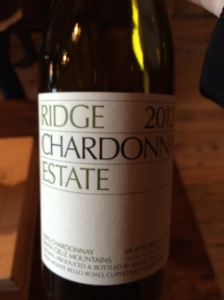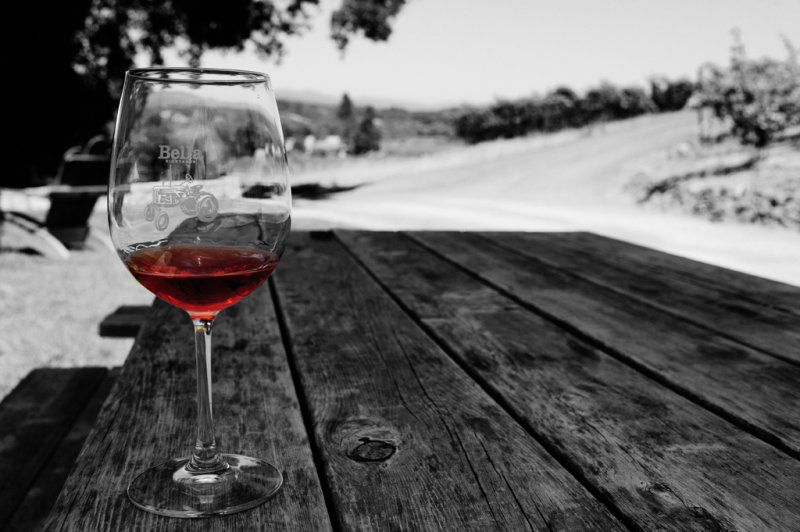As I’ve discussed previously every spring the fine wine world turns its eye to Bordeaux for the en primeur campaign and the release of the previous year’s vintage as futures. Once a cornerstone of the Bordeaux business model, the past couples of years have been incredibly tumultuous and controversial and as the 2014 campaign is drawing to a close many people are beginning to wonder about the future of futures. In fact many people are beginning to wonder about the future of the Bordeaux wine industry as a whole.
 The modern en primeur system took shape in the late 1970’s and early 1980’s in result to a slump in the market. Estates needed ready cash to fund their operations and began to sell their wines as futures. Over time it also became a way for critics and merchants to evaluate the quality of the new vintage. The estates would then use this feedback to set the overall pricing for the release, with the expectation that the futures prices would be a discount on the market price once the wine was released in bottle. The entire system is predicated on speculation and investment in the fine wine industry. And more importantly the system only works when everyone in the chain (chateau, wine merchant and consumer) is able to make money.
The modern en primeur system took shape in the late 1970’s and early 1980’s in result to a slump in the market. Estates needed ready cash to fund their operations and began to sell their wines as futures. Over time it also became a way for critics and merchants to evaluate the quality of the new vintage. The estates would then use this feedback to set the overall pricing for the release, with the expectation that the futures prices would be a discount on the market price once the wine was released in bottle. The entire system is predicated on speculation and investment in the fine wine industry. And more importantly the system only works when everyone in the chain (chateau, wine merchant and consumer) is able to make money.
However, recent years, even the over inflated 2009 and 2010 “vintages of the century,” have proven to be a loss for merchants and consumers. And even estates are beginning to question the value of the process. In fact, Chateau Latour, of First Growth fame, pulled out of the system entirely in 2012 claiming that they preferred to hold their bottles until the wines are ready to drink thus ensuring their customers are getting the most out of the wine. Not a shocking concept and yet unheard of in Bordeaux where wines are released according to a predetermined schedule. A controversial move at the time, many merchants criticized the estate, but over time many have continued to speculate if the move was a wise one. The chateau has suffered the loss of professional relationships with key wine merchants, price drops and more. But ultimately only time will tell as the wine world eagerly awaits the release of the 2012 wines between 2020 and 2023.
 But as the stability of the en primeur continues to waiver I have to wonder what will happen in the future. The system has long been not only a source of ready cash but a barometer of the world’s interest in Bordeaux wines and a tool for marketing back vintages. In recent years Bordeaux has suffered heavy competition from Fine Wines produced in Burgundy, California and beyond. There is even internal competition. Recently, famed French wine critics Bettane & Desseauve stated that they thought 2014 would be the year to render the 1855 Classification outdated. The so-called “Super Seconds” are no longer taking their cues from the First Growths and set their own pricing strategies for the 2014 vintage, looking to take a more significant role in the fine wine industry.
But as the stability of the en primeur continues to waiver I have to wonder what will happen in the future. The system has long been not only a source of ready cash but a barometer of the world’s interest in Bordeaux wines and a tool for marketing back vintages. In recent years Bordeaux has suffered heavy competition from Fine Wines produced in Burgundy, California and beyond. There is even internal competition. Recently, famed French wine critics Bettane & Desseauve stated that they thought 2014 would be the year to render the 1855 Classification outdated. The so-called “Super Seconds” are no longer taking their cues from the First Growths and set their own pricing strategies for the 2014 vintage, looking to take a more significant role in the fine wine industry.
And yet despite this quicksand nature of the wine trade in Bordeaux the estates remain more powerful than ever. Brokers have acknowledged (anonymously of course) that the chateaux no longer respect the traditional model. Estates are more willing to sit on their wines – a la Latour – and are investing in more direct marketing efforts. This is evidenced by the sheer number of Brand Ambassadors now to be found working for the great Bordeaux estates. And seeking to remain relevant wine merchants are diversifying their portfolios, looking to other regions for fine wines.
 But here again we are talking about large well-funded operations, both on the estate and merchant sides. What will happen to the little guys, the small family-owned estates producing the great value Bordeaux wines that grace supermarket shelves around the world? Corporatization. Industry detractors have long called for the simplification and streamlining of the wine industry. Enter the big corporate groups, the insurance agencies and the investment funds. As the cost of operating in the global market continues to rise, these small family-owned estates will continue to struggle. And while many here in Bordeaux might think me fatalistic, the reality is that it is already happening. Even among the classified growths. Recent years have seen the rise of foreign investment in Bordeaux property as well as the growth of diversified wine estate portfolios. And it is not limited to just Bordeaux; the same is happening in Burgundy, California’s Napa Valley and even in England, where sparkling wine production is on the rise.
But here again we are talking about large well-funded operations, both on the estate and merchant sides. What will happen to the little guys, the small family-owned estates producing the great value Bordeaux wines that grace supermarket shelves around the world? Corporatization. Industry detractors have long called for the simplification and streamlining of the wine industry. Enter the big corporate groups, the insurance agencies and the investment funds. As the cost of operating in the global market continues to rise, these small family-owned estates will continue to struggle. And while many here in Bordeaux might think me fatalistic, the reality is that it is already happening. Even among the classified growths. Recent years have seen the rise of foreign investment in Bordeaux property as well as the growth of diversified wine estate portfolios. And it is not limited to just Bordeaux; the same is happening in Burgundy, California’s Napa Valley and even in England, where sparkling wine production is on the rise.
So in the meantime, I will continue to fill my glass with Bordeaux. And I’ll drink to the interesting future of fine wine.
